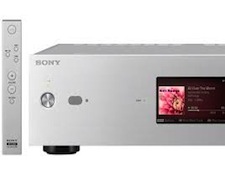It’s the time of year for saving money!
If you frequent Internet audio chat sites you will often see postings by regulars about new products. Very often these posts fall into two categories – raves about prospective sonic capabilities or pans based on what the device does not do or SHOULD do but doesn’t. My advice to audiophiles who feel the urge to read, digest, and take to heart these kind of posts is, don’t – at best they are sour grapes and at worst an effort to torpedo a new product “just because.”
 Many of the new digital product categories overlap. A portable DAC can also be a headphone amplifier and/or a streaming device. Conversely a “player” can also include a streamer or a DAC. Unlike analog components such as a power amplifier, whose functions and capabilities are easy to understand and is used in much the same way in every audio system, computer audio product’s applications and use within a digital signal path can vary – some digital playback products use a central music library on a user’s network while others use internal or external dedicated hard drive, and a few video streamers only use Internet sources.
Many of the new digital product categories overlap. A portable DAC can also be a headphone amplifier and/or a streaming device. Conversely a “player” can also include a streamer or a DAC. Unlike analog components such as a power amplifier, whose functions and capabilities are easy to understand and is used in much the same way in every audio system, computer audio product’s applications and use within a digital signal path can vary – some digital playback products use a central music library on a user’s network while others use internal or external dedicated hard drive, and a few video streamers only use Internet sources.
Depending on how a user decides they want their system set up, a device could be either exactly what they need or a complete ergonomic disaster. Obviously most users would consider any device that required a complete redo or major alteration of the way they want to use their audio system an epic fail. But for someone who already has their system set up in such a way that the new component can be seamlessly integrated, that same component might even be worthy of an ergonomic rave.
 The Sony HAP-Z1ES received these kinds of polarized reactions when it was introduced. Some prospective owners were repulsed by the fact that the HAP-Z1ES lacked the ability to stream directly from NAS drives or any external hard drive that is not directly attached to it. The only USB drives the Sony accepts are external USB drives connected directly to its rear USB port and reformatted by the Sony. You can’t merely plug in a hard drive already populated with music. Instead must use Sony’s transfer program to move files from other locations in your network to the Sony’s own hard drives.
The Sony HAP-Z1ES received these kinds of polarized reactions when it was introduced. Some prospective owners were repulsed by the fact that the HAP-Z1ES lacked the ability to stream directly from NAS drives or any external hard drive that is not directly attached to it. The only USB drives the Sony accepts are external USB drives connected directly to its rear USB port and reformatted by the Sony. You can’t merely plug in a hard drive already populated with music. Instead must use Sony’s transfer program to move files from other locations in your network to the Sony’s own hard drives.
If you already have a computer audio system that relies on a NAS drive you might prefer a streamer that merely plays files from that external drive, at which point the Sony method would seem like the wrong way to do things and worthy of an “epic fail.” But if you are like me, and have several drives on your network which all contain music files and want to combine all your music files in an organized way on one device the Sony HAP-Z1ES method, which allows you to designate folder locations for the HAP Transfer program to look in for new music and transfer it to the Sony, is an excellent working system. Once a week I run the HAP transfer program and all my new music is loaded onto the HAP-Z1ES.
Determining the appropriateness or feasibility of a new audio component in an existing system has always been the trickiest part of our hobby. With the plethora of features and ways of working with other components, a particular digital player, streamer, or DAC could be ideal for your needs or, conversely, a disaster just waiting to happen. But just because some poster calls a product an “epic fail” doesn’t mean that it might not be exactly what you want…





